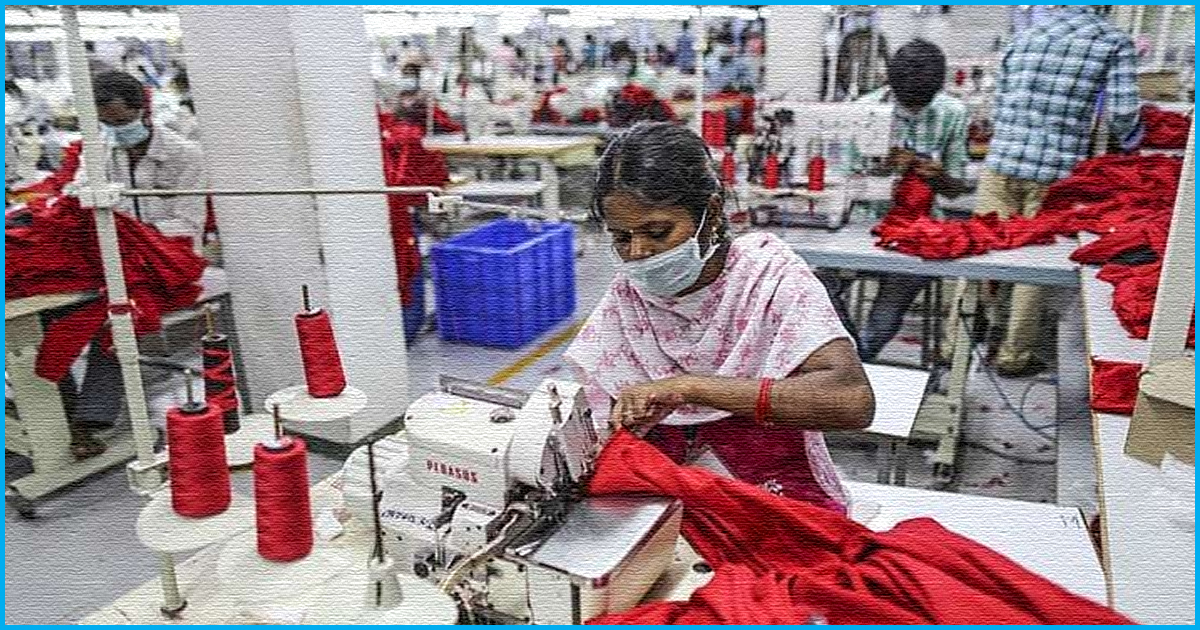
Major Western Brands Pay A Mere 11p Per Hour To Indian Garment Workers, Reveals Study
4 Feb 2019 12:58 PM GMT
As consumers, we admire the shine on our shirt buttons and the glitter on our dresses, but we do not stop to think that those who really deserve our appreciation, the ones who make the clothes, are some of the most vulnerable women and girls of the world.
It was revealed about a week back that women in a Bangladesh factory who made Spice Girls T-shirts were paid 35p an hour. These T-shirts were made to make money for Comic Relief. However, a new report now reveals the exploitation that several home-based garment workers face in India.
What the research found
A University of California research revealed that women and girls belonging to the most marginalised areas and communities worked for about 15 cents (11p) in several homes across the country. Wages were regularly suppressed and child labour and forced labour were common scenarios in these communities.
A very comprehensive study, it found that the work these home-based workers do includes putting final touches to the clothes, including embroidery, tasseling, beadwork and buttons, reported The Guardian.
According to Siddharth Kara, the report’s author and a lecturer at the University of California said that starting from every major brand to every boutique retailer, in fact, every person sourcing garments from the country, is touched by the issue.
According to the study, one in five home-based garment worker was 17 years old or below. The researchers have interviewed 1,452 workers, and the youngest among them was 10 years old. Researchers, however, came across several younger children.
One in ten people in Northern India was found to be trapped in forced labour, and 6% were trapped in bonded labour. In bonded labour, one is made to work in order to pay off a debt. The research found that three-quarters of the women and girls interviewed began working due to some kind of duress, including financial hardships and family pressure. In the North, two-thirds of the underage workers were already out of school.
Findings of the report
All these women from marginalised communities do not have a written contract or belong to a trade union, hence they cannot seek redress for any sort of abusive or unfair treatment. Forced labour is something 99.2% women were subject to; they did not receive the minimum wage meant for them. In several cases, they got only a tenth of the minimum wage.Often, wages are paid late, and many workers are penalised for failing to complete hefty orders on time. During busy periods like Christmas, when shops were in a hurry to meet demands, such problems take a worse turn.
“Imagine you’re earning 13, 14, 15 cents an hour. Then imagine your payments are not even on time, they’re delayed by a month or two. Then imagine you’re given an order that’s going to take you five days to complete and you don’t complete it on time and you’re not paid,” said Kara.
For weeks or even months at a time, these women are unable to leave their homes. Several chronic illnesses like back pain and diminished eyesight were very common among the workers. None of the workers interviewed received medical treatment injuries they suffered at work.
Although the report does not name any brand specifically, the study found that 85% of these home-based workers worked in supply chains for clothing that was mainly shipped to the US or EU.
In some supplier factories, Kara said, efforts have been made by companies to stop abuse. However, they have perhaps not been motivated enough to address the abuse faced by home-based workers.
“It’s not enough to say: ‘Well, my factory didn’t tell me they subcontract’, it’s up to [companies] to demand and require transparency and formality. In the absence of them requiring it, of course, exploitation will go unchecked,” Kara said, adding that big brands have the best ability to bring an end to such conditions.
The Logical Indian take
For export and manufacturing, India’s garment industry is one of the biggest in the world. Informal factory settings, it employs 12.9 million people, and indirectly, millions of more workers are employed in home-based, informal settings.
Clothing brands sourcing garments from India provide employment opportunities to women belonging to marginalised communities. While this could be an advantage for them, it rather turns into a load because of the ill-treatment and abuse.
Engaging people in bonded labour and forced labour is a crime, and The Logical Indian hopes these issues are addressed with more seriousness.
Also Read: Centre Increases Assistance For Rescued Bonded Labourers From Rs 5000 to Rs 20000
 All section
All section













